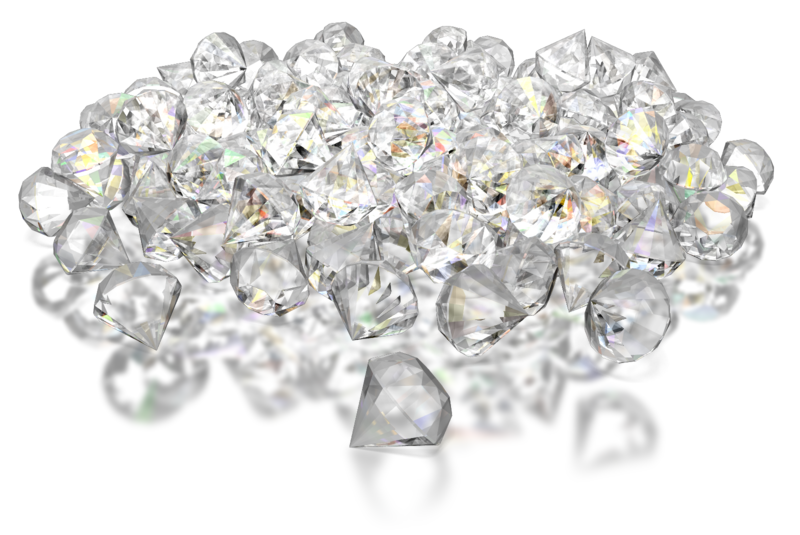A diamond’s value is assessed by combining the 4C’s. Each “C” plays a vital role in how a diamond is viewed in the domestic and international market.
The first “C,” Carat weight is simply as the name implies, the physical weight of the diamond. One carat equals 0.2 grams. It is believed the word carat was derived from the Italian word carato which translates to carob. The carob seed was used as a counterweight to stones and metals.
It is not unusual to use the shorthand term “points” when referring to the weight of a diamond. There are 100 points in a diamond. A .50 or half carat is often called a 50 point or 50 pointer. Each point represents 1/100th of a carat. A 7 pointer weighs .07 or 7/100ths of a carat.
When placing a value on a diamond’s weight there are certain weights more valuable than others. Of course, with all things being equal the larger the diamond the more expensive it is, but specific weight ranges can make an even greater difference. The step of just .02 carat from a .98 diamond to a 1.00 will affect the price per carat significantly.
The next “C” is Cut. The Cut or shape of the diamond affects value from one shape to the next. This pricing here is most often dictated by popularity. Round brilliant-cut diamonds have the greatest demand and therefore, command a premium over all others which are usually grouped as “Fancy” shapes. Within that group there are ones favored over others. In recent years, the marquise has dropped in popularity and along with it, its price.
Cut refers not only to the shape of the diamond, but how well it is cut. With the round brilliant being the most popular diamond cutters and mathematicians have spent years perfecting this shape to create the greatest brilliance. In the diamond community, there has yet to be universal agreement on which dimensions are the absolute best, but the Gemological Institute of America’s (GIA) guidelines are considered the industry standard. Fancy shapes also have certain tolerances for brilliance as well.
Clarity is the third “C.” Clarity grading diamonds is a very subjective endeavor making this one of the most controversial C’s. It is not uncommon for experts in this field to disagree on clarity. Even the gem labs themselves have changed their original grading on a diamond, most often without knowing they had graded the diamond previously. A gem lab’s grading of a diamond can affect the price of a diamond by thousands of dollars. There are many competent gem labs out there, however GIA is often considered the final word.
The clarity of the diamond refers to how clear it is; what kind of characteristics or flaws exist in or on the diamond. Diamonds can have external characteristics such as chips, naturals or extra facets. Assessing the nature and number of these flaws, internal and external will determine a diamonds clarity grade.
And finally, Color. When grading for color one actually looks for a lack of color. The higher on the color chart, which is alphabetical running from Z up to D, the less color the diamond has. All things being equal, the closer the diamond is to D the more valuable it is. However, there are fancy colored diamonds which can be even more valuable than D. The most common fancy color is yellow, though many colors can be found naturally in diamond: blue, red, pink etc. In recent years it is not uncommon to find diamonds treated for color. These are irradiated diamonds. The treatment is most often used to create a blue or yellow diamond. This treatment is typically applied to lower clarity diamonds.
Each C has its own characteristic and value with no one being greater than the next. They each play a role in the overall appearance and cost of a diamond.
Jay Kantor

